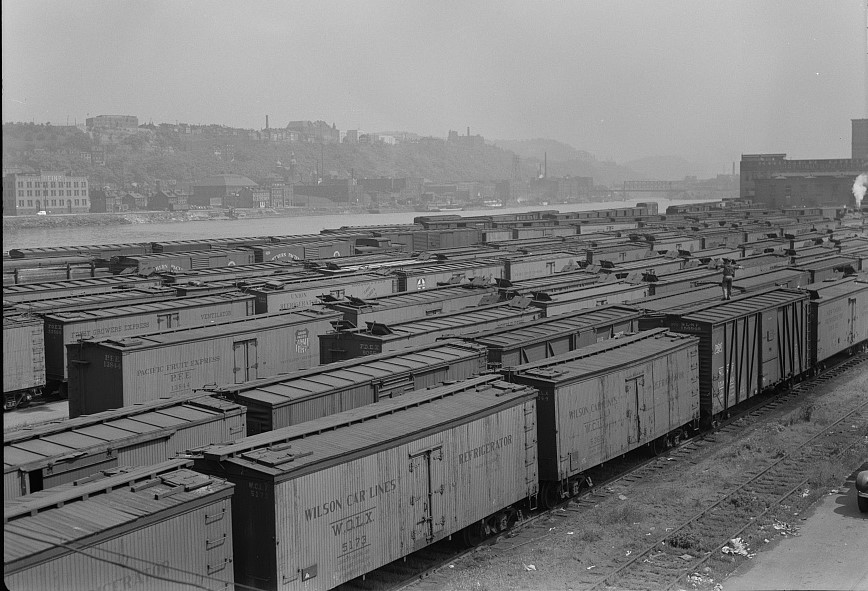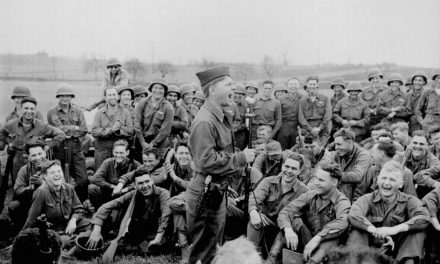The National Resources Planning Board (NRPB), although it is focused on winning the war, already has peacetime transportation in its sights.
President Franklin D. Roosevelt transmitted a NRPB postwar travel report to Congress this week that would involve overhauling the entire transportation system.
The result of a two-year study “to solve the nation’s transport problems,” the report recommends the creation of a national transportation agency apart from the Interstate Commerce Commission that would modernize the nation’s railroad, air, highway, and water transportation systems.
The detailed report proposes terminal unification and reconstruction, economic consolidation of railroads into a limited number of systems arranged along regional lines, planning a modern interregional highway system and urban express routes, developing off-street parking in urban areas, and acquiring land for state and local governments for transportation purposes. There are also recommendations for programs that would convert the airplane industry from war to peace and for construction of airports on a vastly expanded basis.
Although this plan is labeled as “government-sponsored,” it is unclear how the federal government and the NRPB would pay for these changes. A report from the Wall Street Journal on the proposed railroad consolidations stated that “modernization after the war will be aided substantially by government funds.” On the other hand, John MacCormac from the New York Times said the report indicated that “the ultimate solution might lie in the public ownership or leasing of all basic transport facilities” in order to finance these planned railroad consolidations.
The National Resources Planning Board, under the chairmanship of Owen D. Young, presented this postwar plan to the president because they perceive the current transportation circumstances as a “universal neglect of terminal operations.” A major objective, the report said, is to lower rates and fares through economies effected by consolidation, improve the coordination of terminals, enhance national income, stop the “wasteful duplication of facilities and competing services” and serve the public interest.
“There is a clear need for development of a stronger cooperative spirit in the railroad industry,” the report stated. The board also included that this plan could “provide postwar employment for millions of men released from war activities.” Throughout the extensive breakdown of the plan, the NRPB painted modernization as a dire need. A similar railroad consolidation plan was proposed after the First World War but was unsuccessful due to the collapsed economy beginning in the late 1920s.

Freight cars at a railroad depot in Pittsburgh, Sept. 1942. Photo by Ann Rosener, from Library of Congress.
An editorial in the Wall Street Journal argues that the NRPB’s plan is not as positive as it is made out to be, calling it an opus that “is rich in vague hifalutin” and accusing the board of making claims “which simply aren’t so.” The editorial says that the Interstate Commerce Commission has long possessed extensive regulatory powers over transport and that a considerable amount of system integration has already been going on. It warns that with this proposal to nationalize railroads, air and water lines, and highway carriers, there is the danger of a government monopoly.
“It cannot fail to make millions of self-reliant citizens still more uneasy about the kind of country this may be after they have fought a war costly in human blood to keep it the free society it has been,” the Wall Street Journal declared. Concerns for approval of this postwar plan also include transportation industries’ self-interests and the aforementioned speculation of the use of additional tax dollars to pay for this modernization. Whether the transportation plan will be approved by Congress and benefit the country or whether the war will end later rather than sooner is still up for debate.
A representative from the NRPB committee anticipated that, despite some doubts, citizens will eventually come on board.
“It is abundantly clear that with the return of peace, the shackles will be broken and a transport-rationed people will demand and secure a vastly enlarged system… that will overshadow all the progress of the past.”
Sources:
MacCormac, John. “TRANSPORT MERGER A POST-WAR PLAN.” The New York Times, Nov. 6, 1942, p. 1.
“Useless But Disquieting.” Wall Street Journal, Nov. 7, 1942, p. 6.
Kelley, Frank. “Congress Gets Plan for Cheap Postwar Travel.” The Washington Post, Nov. 6, 1942, p. 1.
Carmical, J.H. “Railway Mergers to the Fore Again.” The New York Times, Nov. 8, 1942, p. F1.
“MOTOR TRANSPORT TIED TO WAR AIMS.” The New York Times, Nov. 8, 1942, p. F5.
“Roosevelt Urges Post-War Railroad Mergers, Fewer Regional Systems in Report to Congress.” Wall Street Journal, Nov. 6, 1942, p. 3.
“TOPICS OF INTEREST IN WALL STREET YESTERDAY: Railroad Consolidations.” The New York Times, Nov. 6, 1942, p. 31.





